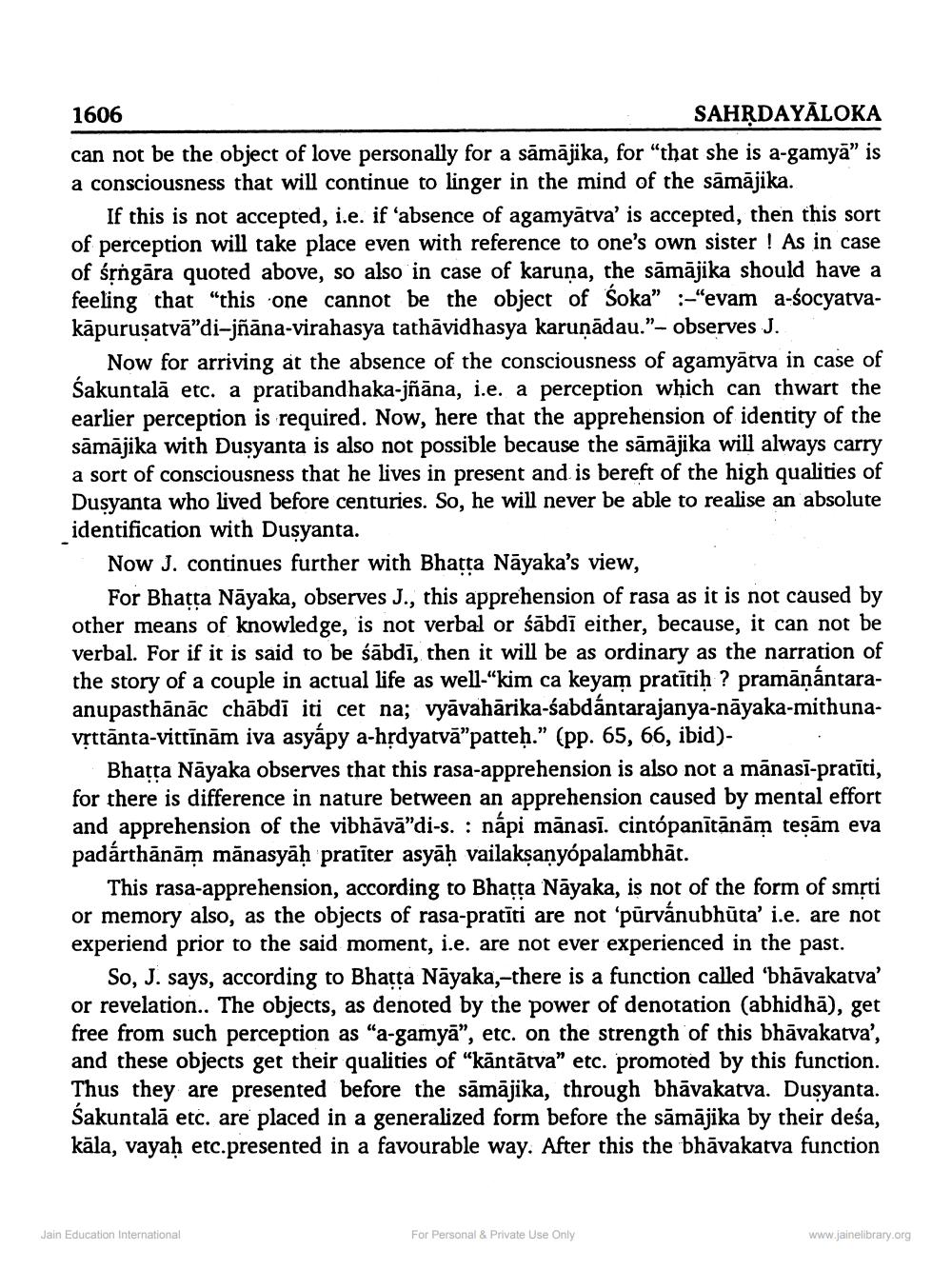________________
1606
SAHRDAYĀLOKA can not be the object of love personally for a sāmājika, for “that she is a-gamyā” is a consciousness that will continue to linger in the mind of the sāmājika.
If this is not accepted, i.e. if 'absence of agamyārva' is accepted, then this sort of perception will take place even with reference to one's own sister ! As in case of śộngāra quoted above, so also in case of karuņa, the sāmājika should have a feeling that “this one cannot be the object of Soka” :-“evam a-socyatvakāpuruṣatvā”di-jñāna-virahasya tathāvidhasya karuņādau.”- observes J.
Now for arriving at the absence of the consciousness of agamyārva in case of Śakuntalā etc. a pratibandhaka-jñāna, i.e. a perception which can thwart the earlier perception is required. Now, here that the apprehension of identity of the sāmājika with Dusyanta is also not possible because the sāmājika will always carry a sort of consciousness that he lives in present and is bereft of the high qualities of Dusyanta who lived before centuries. So, he will never be able to realise an absolute identification with Dusyanta.
Now J. continues further with Bhatta Nāyaka's view,
For Bhatta Nāyaka, observes J., this apprehension of rasa as it is not caused by other means of knowledge, is not verbal or śābdī either, because, it can not be verbal. For if it is said to be sābdī, then it will be as ordinary as the narration of the story of a couple in actual life as well-“kim ca keyam pratitih ? pramāņántaraanupasthānāc chăbdi iti cet na; vyāvahārika-sabdantarajanya-nāyaka-mithunavrttanta-vittīnām iva asyāpy a-hrdyatvā" patteh.” (pp. 65, 66, ibid)
Bhatta Nāyaka observes that this rasa-apprehension is also not a mānasi-pratīti, for there is difference in nature between an apprehension caused by mental effort and apprehension of the vibhāvā"di-s. : nápi mānasi. cintópanitānām tesām eva padárthānām mānasyāḥ pratiter asyāḥ vailaksanyópalambhāt.
This rasa-apprehension, according to Bhatta Nayaka, is not of the form of smrti or memory also, as the objects of rasa-pratīti are not 'pūrvánubhūta' i.e. are not experiend prior to the said moment, i.e. are not ever experienced in the past.
So, J. says, according to Bhatta Nāyaka,-there is a function called 'bhāvakatva' or revelation.. The objects, as denoted by the power of denotation (abhidhā), get free from such perception as "a-gamyā", etc. on the strength of this bhāvakarva', and these objects get their qualities of "kāntātva" etc. promoted by this function. Thus they are presented before the sāmājika, through bhāvakarva. Dusyanta Sakuntalā etc. are placed in a generalized form before the sāmājika by their desa, kāla, vayah etc.presented in a favourable way. After this the bhāvakarva function
Jain Education International
For Personal & Private Use Only
www.jainelibrary.org




